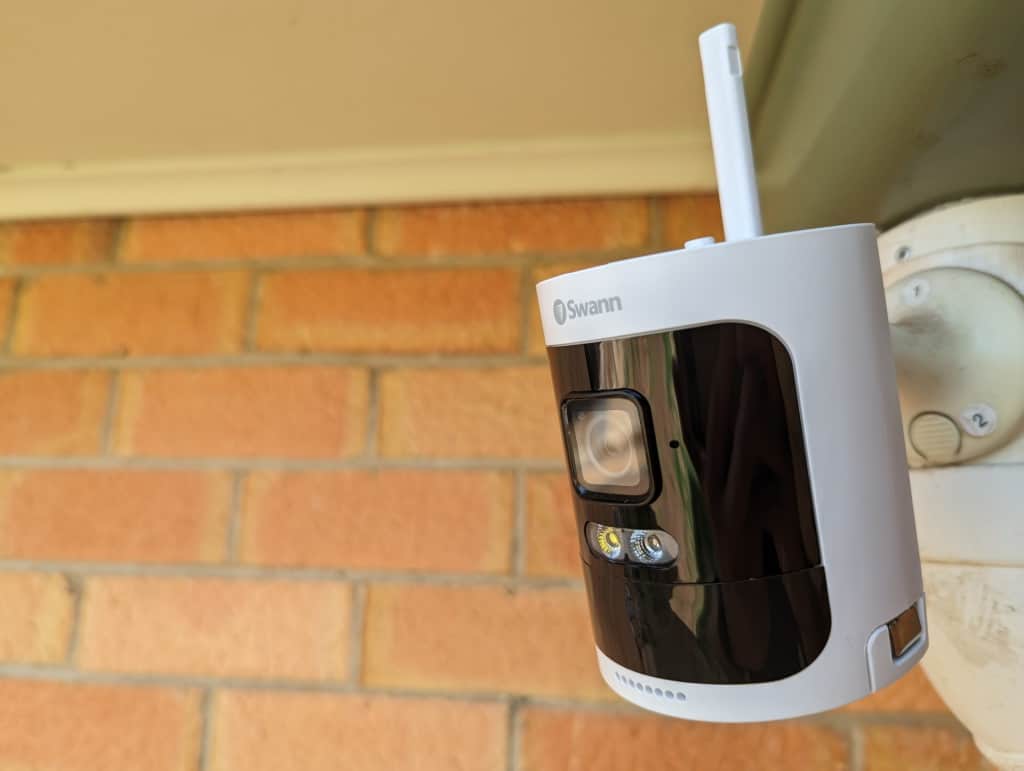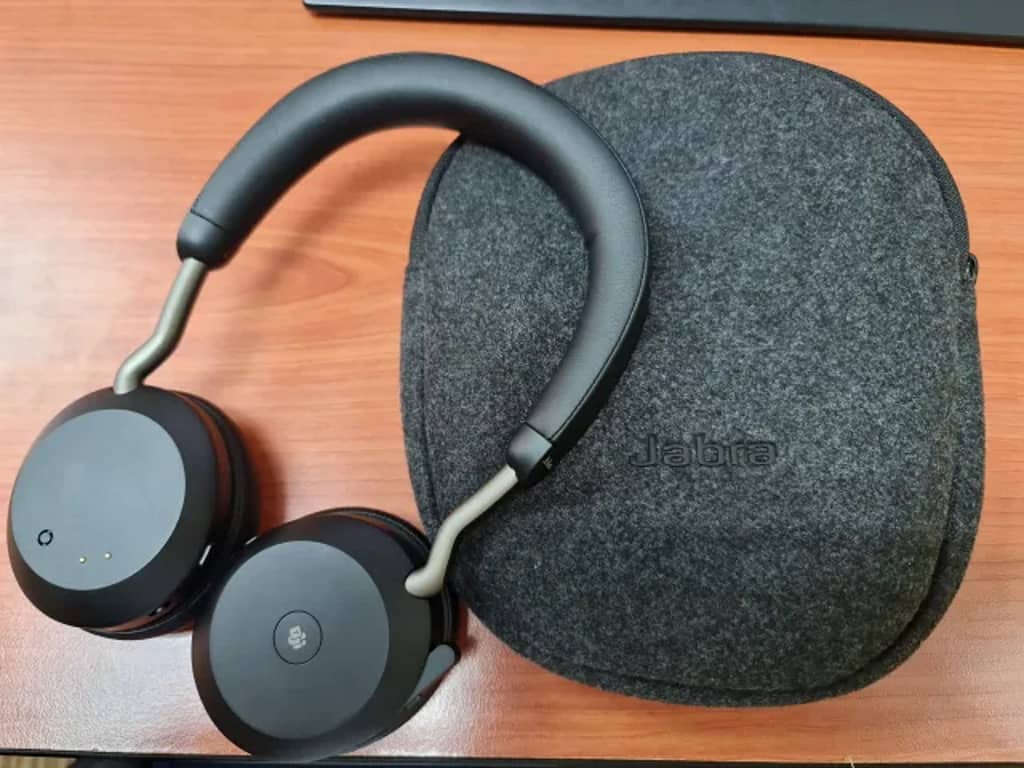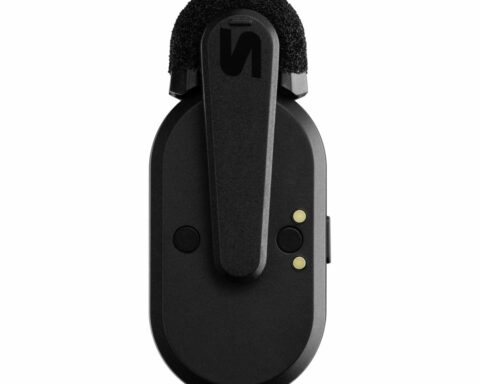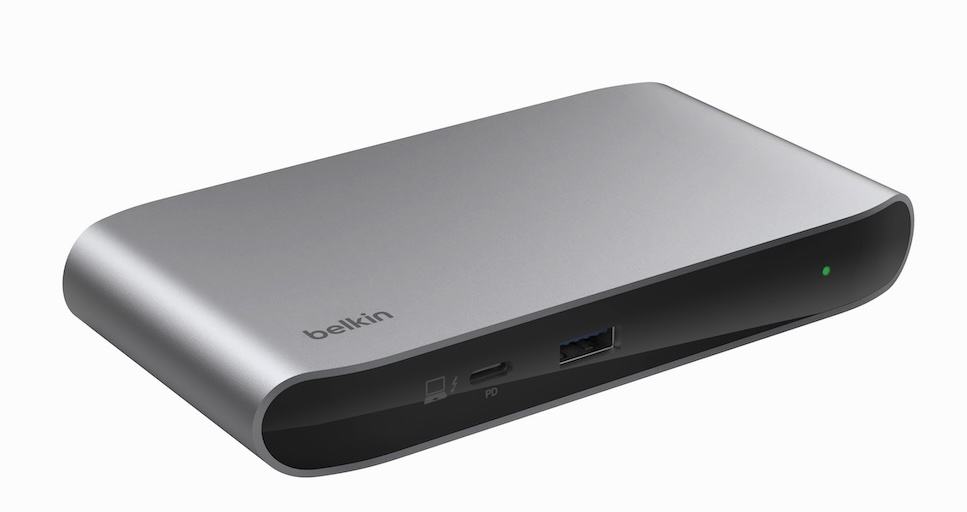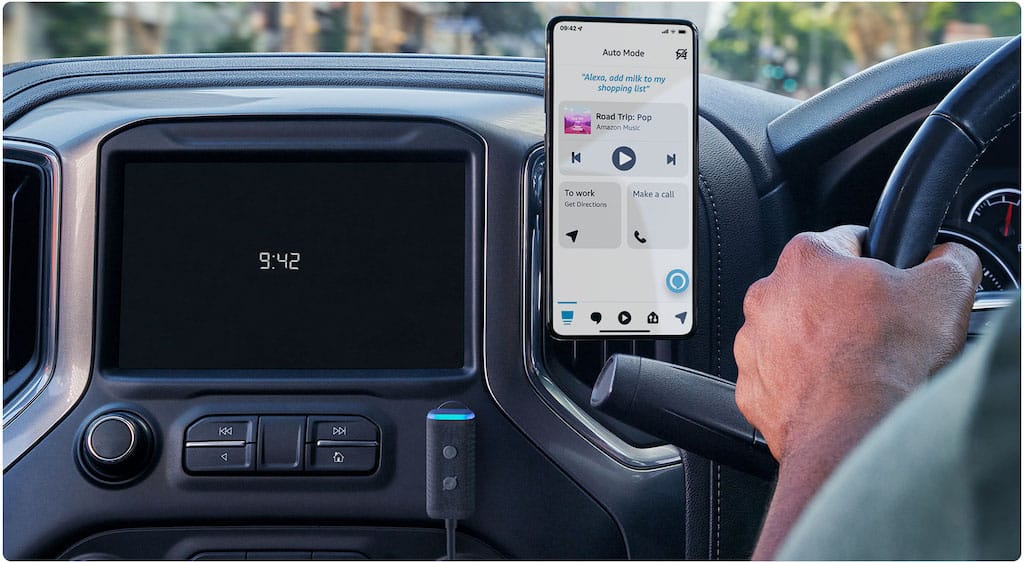The maker of NZ’s own magic The Wand turntable has now come up with a miraculous battery power supply to take it just that bit further, reports ANDREW BAKER.
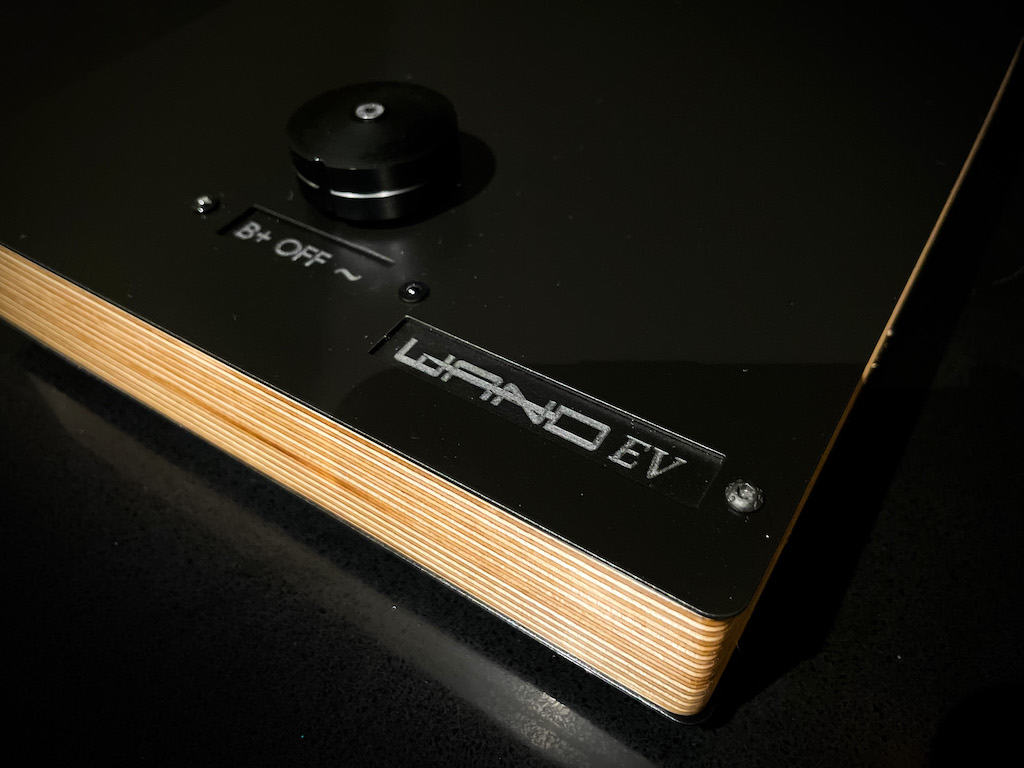 Great news for present and future owners of The Wand EQ phono stage and/or The Wand 14/4 Turntable – particularly if you like to tweak and experiment. The Wand’s creator Simon Brown of Design Build Listen has had a power supply developed to replace the laptop-style power brick provided in-box.
Great news for present and future owners of The Wand EQ phono stage and/or The Wand 14/4 Turntable – particularly if you like to tweak and experiment. The Wand’s creator Simon Brown of Design Build Listen has had a power supply developed to replace the laptop-style power brick provided in-box.
The EV Battery Supply is a switchable battery and mains power unit that supplies power to either the EQ phono stage or the 14/4 Turntable, or – here’s the most exciting part – both at the same time.
Would you like to support our mission to bring intelligence, insight and great writing to entertainment journalism? Help to pay for the coffee that keeps our brains working and fingers typing just for you. Witchdoctor, entertainment for grownups. Riveting writing on music, tech, hi-fi, music, film, TV and other cool stuff. Your one-off (or monthly) $5 or $10 donation will support Witchdoctor.co.nz. and help us keep producing quality content. It’s really easy to donate, just click the ‘Become a supporter’ button below.
Using a 24V sealed lead-acid battery (ideal for shipping as it poses no fire risk) the EV gives 8 hours of running time from fully charged. If you run out of battery, listening can continue while the battery is in charge mode. Simon points out that battery life should be good as the current when running and charging is low, putting very little stress on the battery. There’s also protection to reduce the chance of accidental discharge.
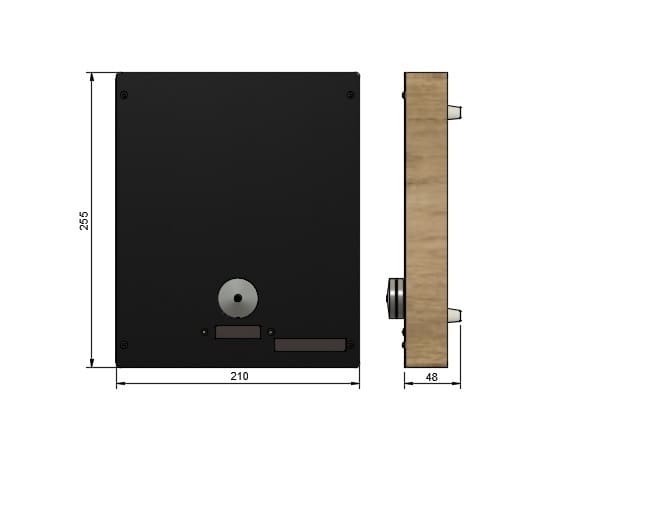 The case of the Battery Supply, handmade here in Aotearoa/New Zealand, has the same plywood construction as the 14/4 Turntable and EQ Phonostage, complete with the matte black top surface. It’s about twice the size of the EQ – making them stackable if space or preference necessitates – and features a nice black knob situated top-front for switching between battery/off/power-charge. A ‘Y’ cable is supplied for connecting the phono stage and turntable to the Battery Supply together and the EV connects to the mains with the same laptop-style power supply that comes standard with the aforementioned units.
The case of the Battery Supply, handmade here in Aotearoa/New Zealand, has the same plywood construction as the 14/4 Turntable and EQ Phonostage, complete with the matte black top surface. It’s about twice the size of the EQ – making them stackable if space or preference necessitates – and features a nice black knob situated top-front for switching between battery/off/power-charge. A ‘Y’ cable is supplied for connecting the phono stage and turntable to the Battery Supply together and the EV connects to the mains with the same laptop-style power supply that comes standard with the aforementioned units.
Already commended for their respective low noise floors, the 14/4 and EQ could be further improved in this regard with the addition of the EV. According to Simon, when in battery mode, the EV should provide a “silent and stable electrical basis” while also being capable of “providing big momentary currents to maximise system dynamics.” This last bit he likens to the acceleration of an electric vehicle.
The EV Battery Supply came as the result of Simon’s experiments with various power supplies for his turntable and phono stage – such as the S-Booster and iFi Elite 24V (both fully endorsed for use with The Wand products) – and finally getting some exciting results, but finding it difficult to explain why, when testing battery power.
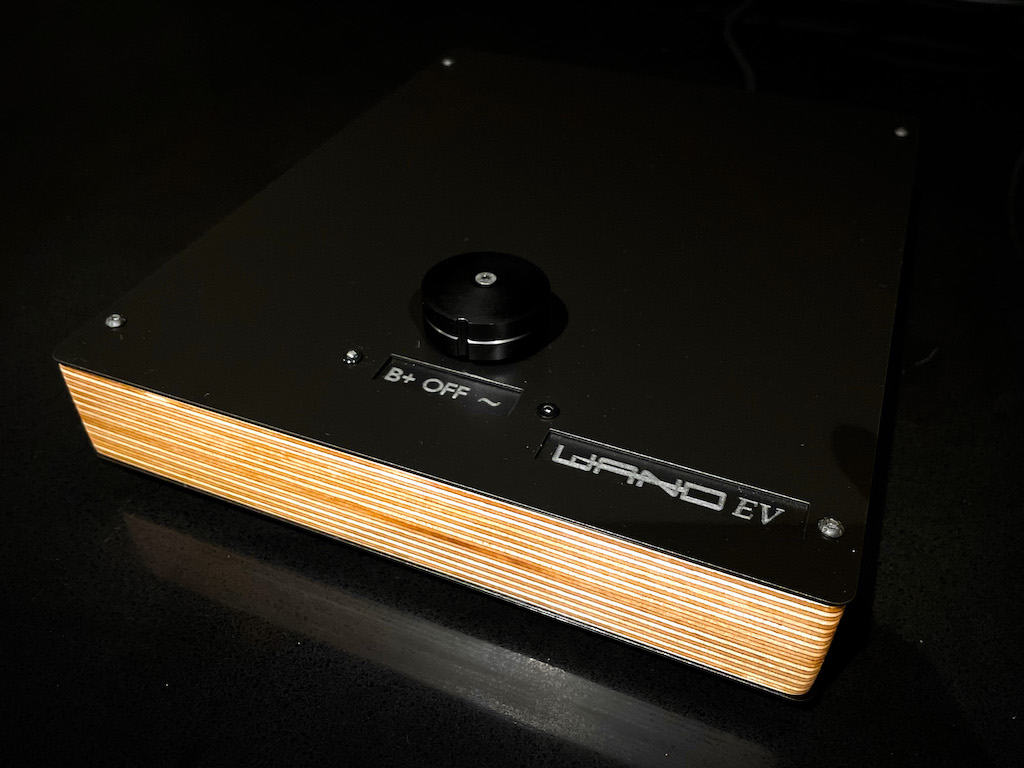 He told me: “I can only speculate that there might be a little noise reduction of what you don’t realise is there, letting you hear the leading edges of notes better. [The EV] may provide the ultimate stable floor for the turntable to work from.” He also speculates a low source impedance can help to heighten dynamics and stability, which makes sense.
He told me: “I can only speculate that there might be a little noise reduction of what you don’t realise is there, letting you hear the leading edges of notes better. [The EV] may provide the ultimate stable floor for the turntable to work from.” He also speculates a low source impedance can help to heighten dynamics and stability, which makes sense.
The effects on sound quality can be difficult to put into words. The results can range from very subtle to quite noticeable. If you think you have particularly “dirty” mains power then you’re likely to feel you benefit greatly from a battery-based power supply. But, as Simon says, you may not even have noticed any noise or interference in your system until introducing battery power and subsequently realising the difference. Many people simply describe a sense of organic ‘rightness’ when listening to ‘battery-powered music’ – good enough a result that they refuse to ever go back to their mains supply.
I think the EQ Phonostage as standard is a wonderful piece of hi-fi that performs well beyond its price bracket – so much so that I’m buying one. My initial impression of it when being fed battery power was “this is a wonderful piece of hi-fi that performs well beyond its price bracket.”
Some in-depth listening was required. Thus, I spent some time listening to records while switching back and forth between battery and mains power. (A quick NB here: the switch on the EV allows this, but when doing so, always turn the volume down on your amplifier, or at least switch the amp to a different source as it can cause a decent ‘pop’ from your speakers.)
Bill Callahan’s Gold record (2020, Drag City) makes for an excellent test album. It’s a lovely recording, sparsely arranged and enjoyable from start to finish. I felt that in battery mode I was indeed hearing less noise floor, resulting in slightly sharper focused edges to tones and an ever so subtle clarity to image separation. On the track ‘35’ I kept returning to a point where the guitar strings squeak as Callahan changes chords and there are some light cymbal hits. With battery mode, there was no doubt in my mind that the squeaks popped slightly more and the cymbal hits shifted ever so slightly to the right, as if being focused better. I noticed more clarity to the edges of Callahan’s voice, helping accentuate the holographic pop or presence and naturalness of his vocal.
Listening to Kruder & Dorfmeister’s The K&D Sessions (1998, G-Stone Records – deluxe remastered edition) I again noted a bit more clarity with things like cymbal hits and vocals. Bass seemed a little tighter around the edges with battery power, but overall, it was a little harder for me to define differences with this type of ‘busier’ music.
I will say that with every record, whenever I switched back to battery power, I thought I perceived a slight increase in gain. A decibel meter soon shut down that theory, but perhaps the lower noise floor gave the illusion of gain and increased presence. I say, hi-fi is all about creating illusions, therefore it can still be considered a palpable result, right?
It could be because it was in my head, having already read it, but I genuinely did feel there was something lovely and organic and right, when using the battery power. I think everyone is going to have different experiences, based on their system and/or mains power supply. I look at the EV as another building block in the vinyl playback structure. Every little thing you add to that structure, from the cartridge to the tonearm to isolating platter mats to under-chassis vibration control, adds up to the whole. Each little component may be subtle on its own, but in unison can make a notable difference. Personally, I would add the EV to my EQ for that very reason: every little thing can make a difference. But also: how cool is it to say your turntable and phono stage are powered by battery?
+ The EV can be purchased from selected retailers for $NZ1250, or enquire directly via the Design Build Listen website.



